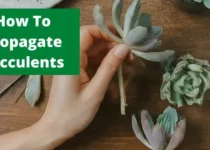How To Grow Quinoa?
Quinoa: From Andean Fields to Your Garden
Quinoa, a versatile and nutritious grain, is gaining popularity worldwide. While it thrives in its native Andean highlands, you can cultivate this superfood in your garden with a little planning and care.

1. Know Your Quinoa:
- Cool Climate Lover: Quinoa prefers cool climates with temperatures ranging from 50-70°F (10-21°C). It is sensitive to heat and humidity.
- Short Growing Season: Quinoa requires a short, frost-free growing season of about 100 days.
- Well-Drained Soil: It prefers loose, well-drained soil with a neutral pH (6.0-7.0).
2. Preparing for Planting:
- Timing: Sow quinoa seeds in early spring, after the last frost, when soil temperatures reach at least 50°F (10°C).
- Site Selection: Choose a sunny location with well-drained soil. Quinoa needs at least six hours of sunlight per day.
- Soil Preparation: Prepare the soil by working in compost or other organic matter to improve fertility and drainage.
3. Planting Quinoa:
- Spacing: Sow seeds 1/2 inch deep and 12-18 inches apart.
- Direct Seeding: Direct sowing is the most common method for planting quinoa.
- Thinning: Once seedlings emerge, thin them to 12-18 inches apart for optimal growth.
4. Care and Maintenance:
- Watering: Keep the soil consistently moist, especially during the first few weeks after planting. Water deeply but less frequently, allowing the soil to dry slightly between waterings.
- Weeding: Remove weeds regularly to prevent competition for resources.
- Fertilizing: Quinoa benefits from a light application of balanced fertilizer early in the growing season.
5. Harvesting Your Quinoa:
- Maturity: Quinoa plants will be ready for harvest about 100 days after planting. The leaves will start to turn yellow, and the seed heads will be full and mature.
- Harvesting Technique: Cut the entire plant just below the seed head. Allow the seed heads to dry in a cool, dry, and well-ventilated place for several days.
- Threshing: After drying, rub the seed heads between your hands or use a threshing tool to remove the seeds from the husks.
- Storing: Store your harvested quinoa in airtight containers in a cool, dark, and dry location.
6. Additional Tips:
- Cold Protection: In areas with late frosts, you can use row covers to protect your quinoa plants.
- Bird Control: Quinoa seeds attract birds. Consider using netting to protect your crop.
- Early Planting: If you are in a warm climate with a long growing season, you can plant quinoa earlier in the season for an earlier harvest.
Enjoy the Harvest:
Growing your quinoa is a rewarding and fulfilling experience. Enjoy the fresh, nutritious, and versatile quinoa in your kitchen, knowing you cultivated it from seed to plate.
Remember, while quinoa is a relatively easy crop to grow, it does require some attention and care. With proper planning, patience, and a little TLC, you can enjoy the benefits of this delicious and nutritious grain from your garden.



